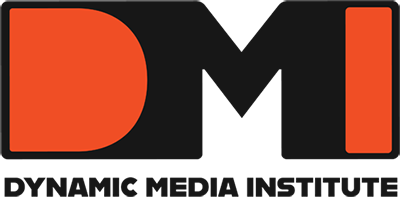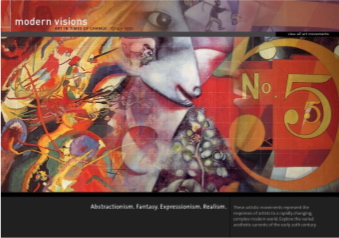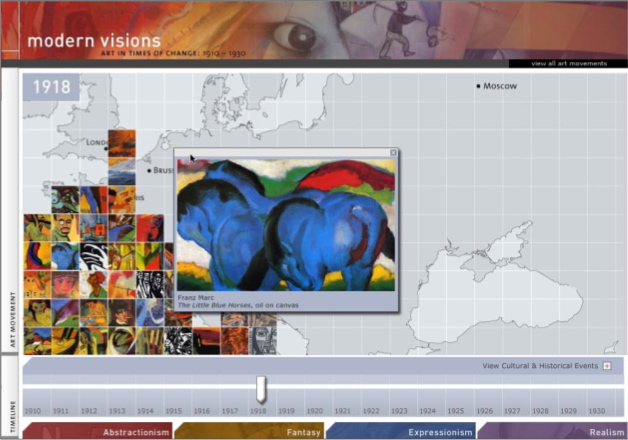Lauren Bessen, MFA ’06
project
The Art Archive is an interactive exhibit of European modernist painting from 1910 to 1930, specifically tracing the development of expressionism, abstractionism, realism, and fantasy. It offers information about art historical movements as well as broader cultural and historical trends. The interface and information design were conceived to make viewers aware of the geographic and cultural context which framed and grounded each work exhibited. By visually incorporating multiple levels within a single screen, the project employed layering to compact the information.
After an initial introduction or title screen, the first stage of the interface uses dynamic layering to visualize the four possible paths of the selected art movements-realism, expressionism, abstractionism, and fantasy. Four differently colored translucent squares, each with an opaque thumbnail image of work representing each thread are aligned atop a world map. The thumbnail images are positioned so as not to obscure the map. Rolling over an individual thumbnail cues the reshuffi‚ing of the other thumbnails to enable the selected square to double in size which reveals additional text-based information. This action also prompts the dynamic appearance of artwork, in each instance an example of the particular art movement, translucently overlaid on the map. The sum effect of this action is akin to “coloring” the map with a particular art movement and thus highlighting the conceptual path or window of choice. Clicking on a square selects the movement and triggers the map to graphically highlight and zoom on the relevant geographic region, in every case centering on Europe.
Having framed the geographic location and artistic movement, the user is immersed within an interactive, scrolling timeline of work. Atop the focused map, thumbnails of artworks are arrayed across time. Ranging from 1910 to 1930, time is mapped across the x-axis while works of art are arranged on the y-axis. Dragging through time, works of art emerge and grow in size from the map layer and move to align themselves in time. The works organically appear and move out of their specific location of creation. Additionally, the map itself scales up and shifts to reframe itself to accommodate patterns in the growth of work. For instance, as a majority of work originates in particular cities or regions the map shifts and zooms to highlight this growth. In manipulating time, users dynamically and visually experience the growth and decay of art movements. Work accumulates unevenly, creating a staggered, graph-like representation of cultural production. While arranged by year, the thumbnails of works impart a sense of overall color or graphic quality shared across works and time.
Art Archive allows users to view famous works of early 20th century European art in their geographic, temporal and cultural contexts. As an interface, it begins to investigate the use of motion and interactivity to add depth to information visualization. The narrative quality of the animation conveys greater levels of information simultaneously than solely possible with static visual communication.
Keywords: European modernist painting, interaction exhibit




